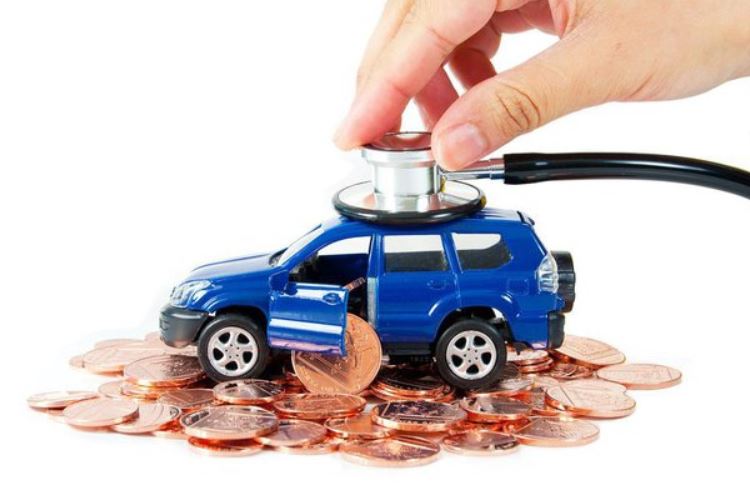Car insurance is an essential aspect of owning and operating a vehicle, providing financial protection against unforeseen circumstances such as accidents, theft, or damage.
However, many drivers find themselves grappling with the question: Why is car insurance so expensive?
In this article, we delve into the various factors contributing to the high cost of car insurance and explore strategies to mitigate these expenses.

Factors Influencing Car Insurance Costs
Age and Driving Experience
Younger and inexperienced drivers typically face higher insurance premiums due to their increased likelihood of being involved in accidents. Statistically, drivers under the age of 25 are considered high-risk, resulting in higher insurance rates.
Vehicle Type and Model
The make and model of the vehicle also play a significant role in determining insurance costs. Sports cars and luxury vehicles are more expensive to insure due to their higher repair and replacement costs.
Location and Driving Environment
The geographical location where a vehicle is primarily driven affects insurance premiums. Urban areas with higher traffic congestion and crime rates tend to have higher insurance rates compared to rural areas.
Driving Record and Claims History
A driver’s past record of accidents and claims directly impacts insurance premiums. Those with a history of traffic violations or frequent claims are considered higher risk and may face increased insurance costs.
Insurance Coverage Options
When purchasing car insurance, drivers have various coverage options to choose from, each affecting the overall cost of insurance premiums.
Liability Insurance
Liability insurance covers damages and injuries caused to others in an accident where the insured driver is at fault. State laws often mandate minimum liability coverage limits.
Collision Coverage
Collision coverage pays for damages to the insured vehicle resulting from a collision with another vehicle or object, regardless of fault.
Comprehensive Coverage
Comprehensive coverage provides protection against non-collision events such as theft, vandalism, or natural disasters.
Personal Injury Protection
Personal injury protection covers medical expenses for the driver and passengers injured in an accident, regardless of fault.
Risk Assessment by Insurance Companies
Insurance companies assess risk factors associated with each driver to determine appropriate premium rates.
Actuarial Data and Statistical Analysis
Insurers utilize actuarial data and statistical analysis to predict the likelihood of accidents and claims based on various factors.
Risk Factors Considered by Insurers
Factors such as age, gender, driving history, credit score, and vehicle type are considered when assessing an individual’s risk profile.
Pricing Strategies and Premium Calculations
Insurance companies use complex algorithms to calculate premiums, taking into account risk factors and desired profit margins.
Regulatory Factors
State laws and regulations significantly influence car insurance costs and coverage requirements.
Mandatory Coverage Requirements
Most states require drivers to carry a minimum level of liability insurance to legally operate a vehicle.
Insurance Industry Oversight
Government agencies regulate the insurance industry to ensure fair practices and consumer protection.
Economic Factors
Economic conditions and trends also impact car insurance costs.
Cost of Claims and Payouts
Rising medical costs and vehicle repair expenses contribute to higher insurance premiums.
Market Competition Among Insurers
Competition among insurance companies can lead to fluctuations in pricing and coverage options.
Economic Trends and Inflation
Inflation and economic downturns may influence insurance pricing and affordability.
Strategies to Lower Insurance Costs
While car insurance can be expensive, there are strategies drivers can implement to reduce their premiums.
Defensive Driving Courses
Completing a defensive driving course can demonstrate responsible driving behavior and qualify for insurance discounts.
Bundling Policies
Purchasing multiple insurance policies from the same provider, such as home and auto insurance, often results in discounted rates.
Increasing Deductibles
Opting for a higher deductible can lower monthly premiums, although it means paying more out of pocket in the event of a claim.
Shopping Around for Quotes
Comparing quotes from multiple insurance companies allows drivers to find the most competitive rates and coverage options.
Conclusion
Car insurance costs are influenced by a myriad of factors, including individual risk profiles, regulatory requirements, economic conditions, and insurance company practices. While the expense of car insurance may seem daunting, understanding the factors at play and exploring cost-saving strategies can help drivers manage their insurance costs effectively.
FAQs
Why do young drivers pay higher insurance premiums?
Young drivers are statistically more likely to be involved in accidents, leading to higher insurance premiums to offset the increased risk.
What is the significance of liability insurance?
Liability insurance provides financial protection against damages and injuries caused to others in an accident where the insured driver is at fault.
How can I lower my car insurance costs?
Drivers can lower their insurance costs by maintaining a clean driving record, opting for higher deductibles, and shopping around for quotes to find the best rates.
Are there any discounts available for car insurance?
Many insurance companies offer discounts for factors such as safe driving habits, completion of defensive driving courses, and bundling policies.
What happens if I drive without car insurance?
Driving without car insurance is illegal in most states and can result in severe penalties, including fines, license suspension, and vehicle impoundment.


